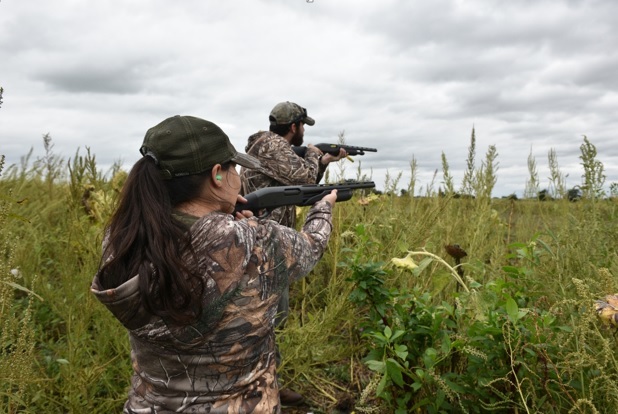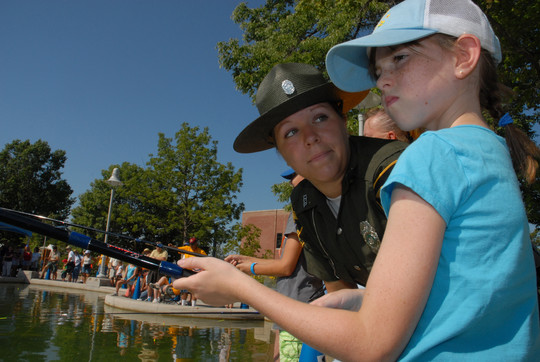DNR - Reserved hunts and State Fair
Indiana Department of Natural Resources sent this bulletin at 07/09/2019 07:05 AM EDT
Visit us at the Indiana State FairThis year, Fish & Wildlife will offer several free educational presentations during the Indiana State Fair, Aug. 2–18.
We will also be at the Pathway to Water Quality (located on the east side of the fairgrounds next to the Boy Scout Bridge), offering these free educational programs:
We look forward to seeing you at the Indiana State Fair. Learn to fish this summerAre you new to fishing or do you want to advance your fishing skills? Consider attending one of the following workshops:
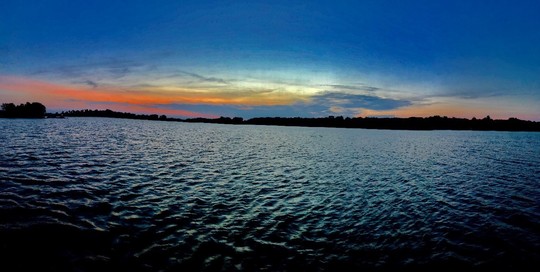
|
|
Gov. Eric Holcomb has proclaimed July 2019 as Lakes Appreciation Month. Lakes and reservoirs are among Indiana’s most valuable natural resources and need to be protected for future generations. They provide drinking water, irrigation, energy, recreation, scenic beauty and wildlife habitat. You can assist Indiana and its partners by participating in the Secchi Dip-In, which helps to track water transparency trends and changing water quality. If you would like to participate in the celebration of Indiana’s lakes, check out the North American Lakes Management Society website. |

Educational signage helps neighbors appreciate native plantings
|
Plantings of native wildflowers and warm-season grasses are incredibly beneficial to wildlife, but may appear untidy in neighborhood settings. |
 |
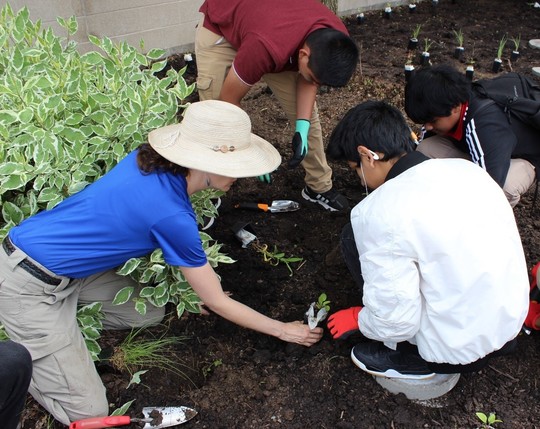
Pollinator habitat installed at Indianapolis school
Students at Wendell Phillips School 63 got their hands dirty and planted native plants for a new outdoor classroom. As part of the Indiana Natural Resources Foundation’s Give Adventure grant and a grant through Reconnecting to Our Waterways, the school received assistance from the DNR, Groundwork Indy, U.S. Fish & Wildlife Service and Indy Parks. They will plant three native habitat installations. The first installation, a pollinator garden in the front of the school, was completed with help from Wendell Phillips' students.
 |
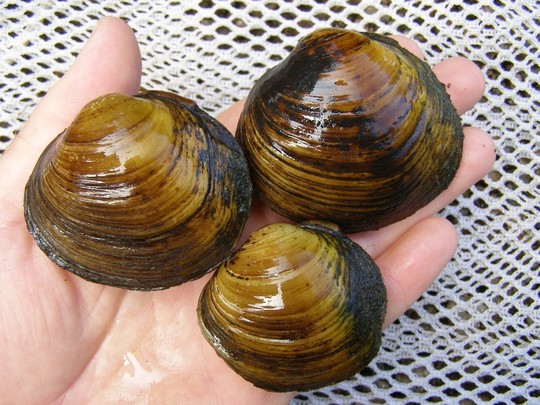
Don’t pick up mussels or their shells
As the summer continues to heat up, many of our rivers and streams will start to lower, exposing large sand and rock bars. If you have ever walked along these areas, you may have encountered a stranded freshwater mussel or noticed a trail in the sand as a mussel tries to get to deeper water.
Mussels have a single foot, similar to your tongue, which they use to move. This makes it difficult to move quickly and get to safety. While it might be tempting to use a mussel as fish bait or to take home some shells for your rock garden, remember that it is illegal in Indiana to take live freshwater mussels or shell material.
 |
Nongame Wildlife Fund at Work: Reptiles
Indiana has two species of rattlesnake: the eastern massasauga (Sistrurus catenatus), which occurs at sites scattered in the northern part of the state, and the timber rattlesnake (Crotalus horridus), which inhabits the forested hills of southern Indiana. Between the two species, timber rattlesnakes are larger and are more likely to be encountered. Outdoor enthusiasts may encounter these snakes while enjoying the rugged terrain in Brown, Morgan and Monroe counties.
Timber rattlesnake activity spikes during the summer, when male rattlesnakes are searching for a mate. Normally calm and quiet, these snakes do not always rattle when approached. Watch your step while hiking along trails or stepping over fallen logs in Indiana’s hill country. If you need to step over a log, first peek over to make sure there are no snakes sitting on the other aside, as they tend to hunt in such spaces.
The odds of encountering a rattlesnake are low in Indiana, but they do reside here, and you should be mindful of their presence. DNR herpetologists are continually recording observations of endangered species like timber rattlesnakes, so if you see one and snap a photo, you can report your sighting to HerpSurveys@dnr.IN.gov.
Monitoring of rattlesnake populations is paid for by the Nongame Wildlife Fund. To help Indiana’s rare wildlife, consider donating: on.in.gov/nongamewildlifefund.
 |
NRC to meet July
The Indiana Natural Resources Commission is scheduled to meet on Tuesday, July 16, at Fort Harrison State Park, at the Garrison in Indianapolis.
For more information, visit https://www.in.gov/nrc/.
Recent news releases
Volunteers needed to count turkey broods
CHAP announces 2019 successful grant applicants
Deer Hunt Registry signups begin July 1
Hybrid striped bass to be stocked in Indiana lakes
Skamania steelhead season heats up in Northwest Indiana
Invasive black carp nearing Indiana waters
More
- Where to Hunt
- Where to Fish
- Buy a license
- Property Information
- Nongame and Endangered Wildlife
- 2019-20 Hunting & Trapping Seasons
- Fishing Guide

About Fish and Wildlife Management in Indiana
Fish and wildlife management and public access are funded by fishing and hunting license revenue and also through the Wildlife and Sport Fish Restoration Programs administered by the U.S. Fish & Wildlife Service. These programs collect excise taxes on sporting arms and ammunition, archery equipment, fishing equipment, and motor boat fuels. The money is distributed among state fish and wildlife agencies based on land size and the number of licensed anglers and hunters in each state. Find out more information about fish and wildlife management in Indiana at Wildlife.IN.gov.
Having trouble viewing this email? View it as a Web page.




